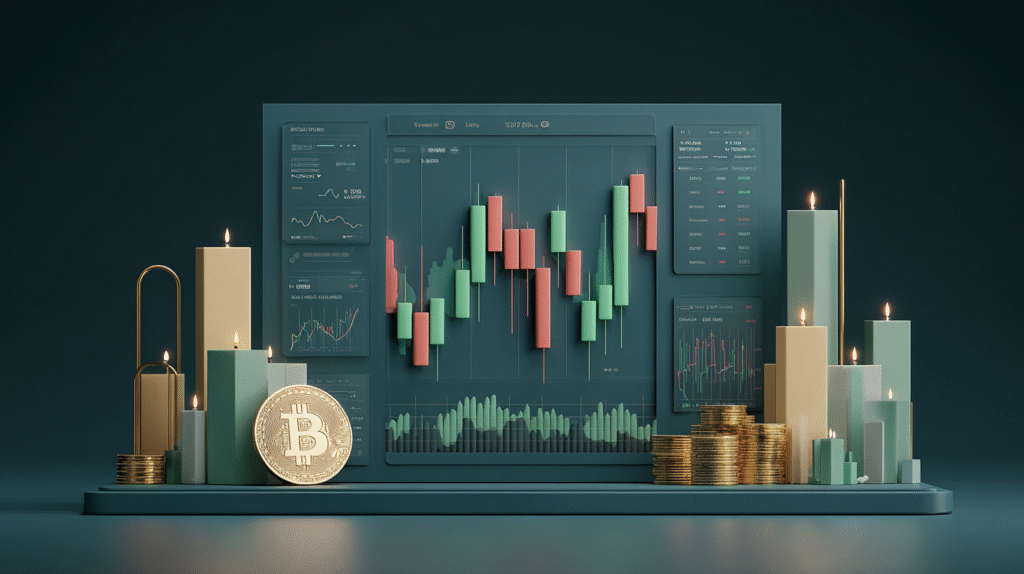Basic Trading Knowledge (2025): Essential Concepts for Crypto Beginners
Basic Trading Knowledge is the foundation of successful crypto trading. Before touching leverage or chasing altcoin breakouts, understand how orders are executed, how liquidity and spreads affect your fill, and why fees compound into your total cost. This guide explains order types (market, limit, stop‑market, stop‑limit, OCO, bracket), liquidity and slippage, trading pairs, maker vs taker fees, and bid‑ask spread — with practical examples and checklists you can apply today. If you’re new, start with our pillar: Crypto Trading for Beginners.

Why Basic Trading Knowledge matters
- Reduce hidden costs by minding spread, fees, and slippage.
- Choose the right order type for your intent and market conditions.
- Avoid classic pitfalls (wrong pair, no stop‑loss, overusing market orders).
Order Types Explained
| Order Type | How It Works | When to Use | Risks / Notes |
|---|---|---|---|
| Market | Executes immediately at best available price. | Urgent, small orders; exit fast. | Slippage on thin books; higher taker fee. |
| Limit | Places your desired price; fills if market trades there. | Price control; potential maker fee (use post‑only). | May not fill if market never returns. |
| Stop‑Market | On stop trigger, sends a market order (popular for stop‑loss). | Cap downside quickly in volatile moves. | Fill can be worse than stop in fast markets. |
| Stop‑Limit | On stop trigger, places a limit order. | Price‑controlled stops for disciplined exits. | No fill risk during sharp moves. |
| OCO | Take‑profit + stop‑loss; when one fills, the other cancels. | Hands‑off position management. | Wrong parameters can miss fills. |
| Bracket | Entry with linked TP & SL “brackets.” | Automated risk management. | Availability varies by exchange. |
Pro tip: Use post‑only to ensure maker status where supported, potentially lowering fees.
Liquidity & Slippage
Liquidity is how easily your order fills without moving price. Slippage is the difference between expected and actual fill. Depth, order size, volatility, and time of day all matter.
- Prefer liquid pairs (BTC/USDT, ETH/USDT) for tighter fills.
- Split big orders; avoid chasing during news spikes.
- Use limit orders near the touch to control slippage.
Trading Pairs & Quotes
A trading pair is BASE/QUOTE (e.g., BTC/USDT). You spend the QUOTE to buy the BASE. Beginners often stick to liquid pairs with stablecoin quotes for clarity.
- Stablecoin quotes (USDT/USDC) resemble USD accounting.
- Crypto‑to‑crypto pairs gauge relative strength (e.g., ETH/BTC).
- Fiat pairs may be region‑restricted.
Maker vs Taker Fees
Maker adds liquidity (resting limit) and typically pays a lower fee. Taker removes liquidity (market/limit crossing) and usually pays more. Check your exchange’s tier schedule and token discounts.
Tip: Try post‑only to enforce maker status where available.
Bid‑Ask Spread
Bid is the highest buy; Ask is the lowest sell; Spread = Ask − Bid. Narrow spreads lower implicit cost. Spreads often widen during high‑volatility events or on illiquid pairs.
Total Execution Cost
Formula: Total Execution Cost = Spread + Exchange Fees + Slippage
| Component | What It Is | How to Reduce |
|---|---|---|
| Spread | Gap between bid and ask | Pick liquid pairs; avoid news spikes |
| Fees | Maker/taker, funding, withdrawal | Use maker/post‑only; check tier/discounts |
| Slippage | Fill worse than expected | Use limits; split orders; trade deep books |
Practical Walkthroughs
Example 1 — Market Buy BTC
- Deposit USDT → open BTC/USDT → choose Market.
- Enter size; execute; review fills for taker fee and any slippage.
- Add a stop‑loss via Stop‑Market to cap downside.
Example 2 — Limit Buy ETH
- Place a Limit slightly below current price.
- It sits in the book (maker); potentially lower fee.
- If not filled, adjust or cancel; set an OCO (TP & SL) after entry.
Example 3 — Bracket Order
- Enter with an order that auto‑creates linked TP and SL.
- When one fills, the other cancels → hands‑off risk management.
Common Beginner Mistakes
- Overusing market orders → higher taker fee + slippage.
- Ignoring spread/depth before placing size.
- Choosing the wrong pair (ticker look‑alikes).
- No stop‑loss or wrong stop type.
- Forgetting funding in perpetual futures.
Where to Practice
Start small, focus on execution quality, then scale up:
- Binance — deep liquidity across spot & derivatives.
- OKX — advanced tools and competitive fees.
- Bybit — intuitive UI & copy trading.
- Phemex — beginner promos and futures.
- Deribit — best‑in‑class options on BTC & ETH.
Disclosure: Some links are affiliate; we may earn a commission at no extra cost to you.
10‑Point Checklist (Before You Place an Order)
- Confirm the pair.
- Check spread & depth.
- Select the right order type.
- Size appropriately; avoid sweeping the book.
- Plan TP/SL (OCO or bracket).
- Review fees (maker/taker, funding).
- Avoid thin liquidity around breaking news.
- Use post‑only for maker when possible.
- Test small first; scale only after fills are clean.
- Journal the trade: spread/fee/slippage, result, lesson.
FAQs
Market vs Limit — when should I use each?
Market is for speed and small sizes; Limit is for price control and potentially lower maker fees.
What is slippage?
The difference between expected and actual fill due to liquidity and volatility. Reduce it with limits, smaller sizes, and liquid pairs.
Do maker vs taker fees matter?
Yes. Maker often pays lower fees; taker pays higher for immediate execution. Over time, fee differences impact results.
Does bid‑ask spread matter?
Absolutely. Spread is an implicit cost you pay every time; aim for tight spreads in liquid markets.
Conclusion
Basic Trading Knowledge saves money and prevents avoidable mistakes. Master order types, pick liquid pairs, watch spread, and calculate total execution cost. Start small, use OCO/bracket for discipline, and continue learning with our pillar guide: Crypto Trading for Beginners.
